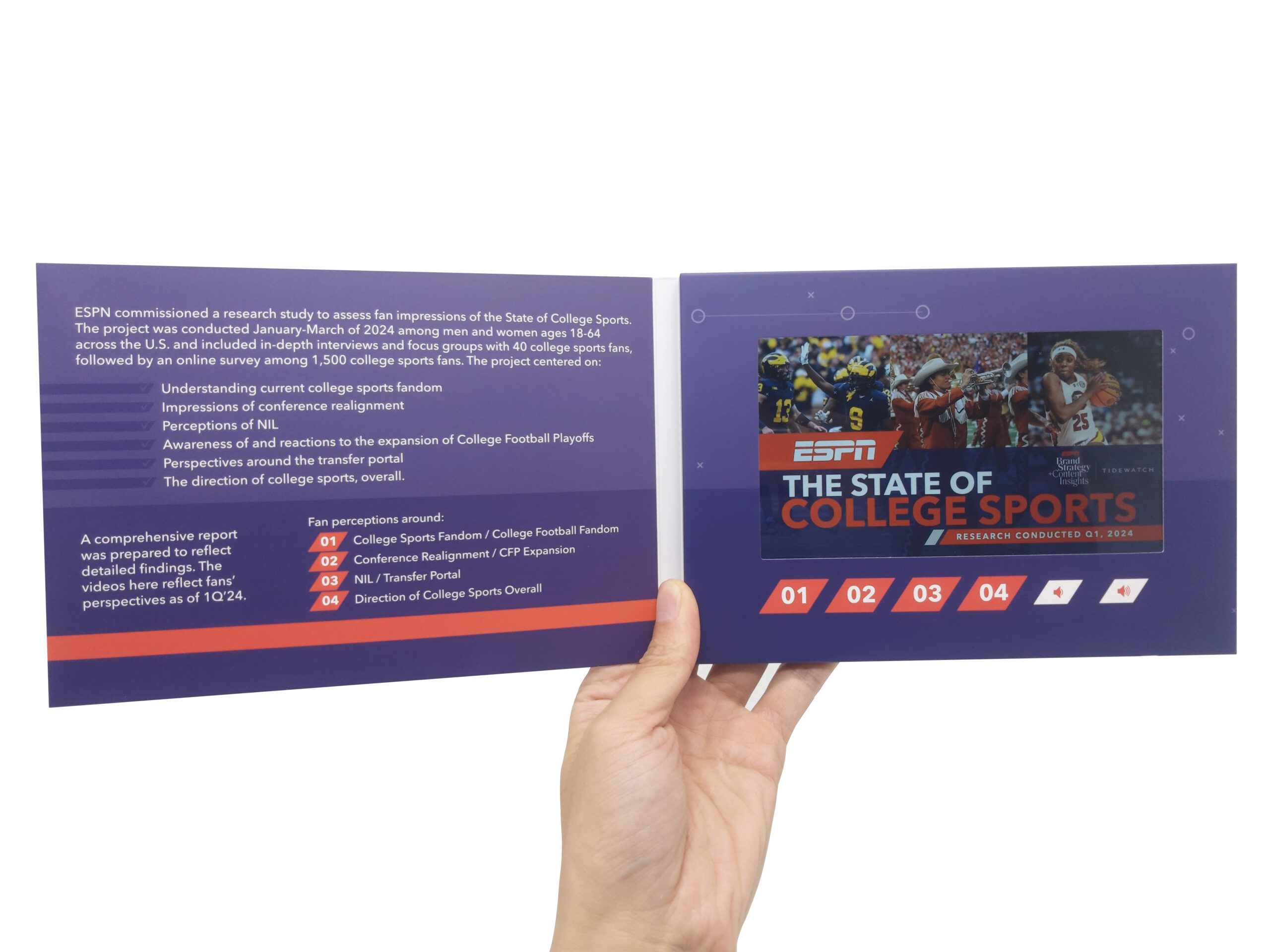
Understanding Video Brochures
A video brochure, or video CTA, is an interactive promotional tool that combines the power of video and print media. It is essentially a physical brochure embedded with a small LCD screen, playing a video message when opened. This combination of visual and auditory stimuli creates a dynamic and engaging experience for viewers, making video brochures an effective medium to captivate audiences and drive conversions.
The Evolution of CTAs in Video Brochures
In the realm of digital marketing, the Call-To-Action (CTA) has evolved into a pivotal component of any marketing strategy, and video brochures are no exception. A CTA is an explicit directive within the content that encourages viewers to take a specific action. This action could range from signing up for a newsletter, purchasing a product, sharing the content, or any other action beneficial to the brand or company.
In the context of video brochures, the CTA has transformed from a mere prompt to an immersive and interactive experience, bridging the gap between content consumption and user action.
Crafting Compelling CTAs: Design Techniques
The success of a CTA largely depends on its design. Here are some effective design techniques to craft compelling CTAs that grab attention and prompt action.
Highlight with Contrasting Colors
Color plays a crucial role in drawing attention to your CTA. Using contrasting colors for your CTA button can make it stand out amidst the rest of the content, making it more noticeable and click-enticing.
Set Clear Visual Hierarchy
A well-structured visual hierarchy guides the viewer’s eyes to the most important elements first. In the case of video brochures, your CTA should be the most prominent element, easily identifiable and distinguishable from the rest of the content.
Use Interactive Elements
Adding interactive elements such as clickable buttons or overlays can increase engagement and make it easier for viewers to take the desired action. Interactive CTAs not only enhance user experience but also reduce the steps needed for the viewer to perform the action.
Optimize for Mobile
With a growing number of people consuming video content on mobile devices, optimizing your CTAs for mobile screens is crucial. This involves ensuring easy readability, clickability, and a mobile-responsive landing page for viewers who click through from mobile devices.
Crafting Compelling CTAs: Copywriting Techniques
Beyond design, the copy of your CTA is pivotal in persuading viewers to take action. Here are some effective copywriting techniques for crafting compelling CTAs.

Use Action-Oriented Language
The language of your CTA should be clear, concise, and action-oriented. Using powerful, motivating verbs can instill a sense of action and urgency in your viewers, compelling them to act promptly.
Personalize The Message
Understanding your audience is key to crafting a compelling CTA. By knowing their preferences and communication styles, you can tailor your CTA’s language to appeal directly to them. Personalized CTAs resonate well with viewers and are more likely to prompt action.
Create a Sense of Urgency
Creating a sense of urgency can encourage immediate action. Time-limited offers or promotions can instigate viewers to act quickly, motivating them to act promptly rather than procrastinate.
Highlight Benefits Over Features
A persuasive CTA doesn’t just state what you want; it highlights the benefits for the viewer. Instead of a generic “Buy Now,” try “Unlock Exclusive Savings Today.” This approach communicates the value of taking action, making the CTA more appealing to the viewer.
Testing and Optimization
Creating an effective CTA involves a continuous process of testing, analyzing, and refining. Here are some strategies for optimizing your CTAs for higher conversions.
A/B Testing
A/B testing involves comparing two versions of a CTA to see which performs better. By analyzing the performance metrics, you can identify the best-performing CTA elements and continually refine your CTAs based on these insights.
Measure and Analyze Performance
Measuring your CTA’s performance helps you understand its effectiveness and identify areas for improvement. Tools such as Google Analytics can track metrics like click-through rates, conversion rates, and viewer engagement, providing valuable insights for optimization.
Iterate and Improve
Based on the data from your tests and analysis, continually refine and iterate on your CTAs to improve their effectiveness. Remember, what works today might not work tomorrow. Always be ready to adapt and evolve based on your audience’s changing preferences and behavior.
Incorporating CTAs Across Different Channels
CTAs can be effectively incorporated across various channels to extend their reach and impact. Here are some ways to leverage CTAs across different platforms.
Email Marketing Campaigns
Emails provide an excellent opportunity to reach your audience directly. Incorporating compelling CTAs in your emails can drive engagement and boost conversions.
Social Media Platforms
On social media, CTAs can prompt likes, shares, and other forms of engagement. A strategically placed CTA on a social media post can direct traffic to your website or landing page, driving further engagement and conversions.
Video Content
CTAs within video content can turn passive viewers into active participants. By strategically placing CTAs within your videos, you can encourage viewers to like, share, subscribe, or take other desired actions.
Print Materials
Despite the predominance of digital media, print materials still hold their charm. Incorporating CTAs in video brochures, flyers, and other print materials can direct readers to your digital platforms, bridging the gap between offline and online marketing.
Leveraging Technology: The Role of QR Codes in CTAs
In the era of smartphones, QR codes provide a seamless way to connect offline and online experiences. Incorporating QR codes in your CTAs can streamline the user journey, enabling viewers to scan the code and be instantly directed to the desired web page. This can be particularly effective in scheduling calls, where a scanned QR code can lead the viewer to a scheduling page, making the process quick and easy.
Conclusion
Mastering the art of creating compelling CTAs in video brochures is a crucial skill in today’s digital marketing landscape. By understanding your audience, crafting clear and concise messages, creating a sense of urgency, and leveraging the power of design, you can greatly enhance the impact of your video brochures and boost viewer engagement and conversions. Remember, a well-crafted CTA is not just an invitation; it’s a key that unlocks a world of opportunities for your business.




